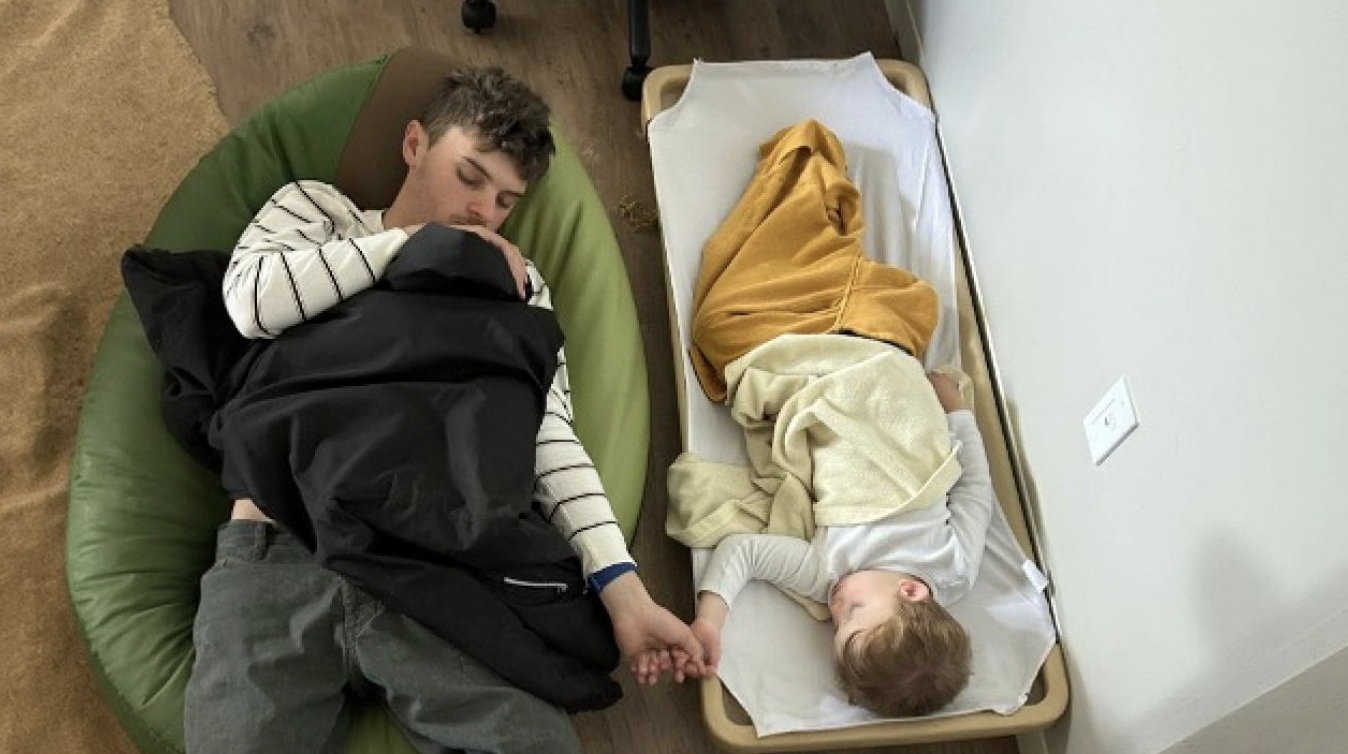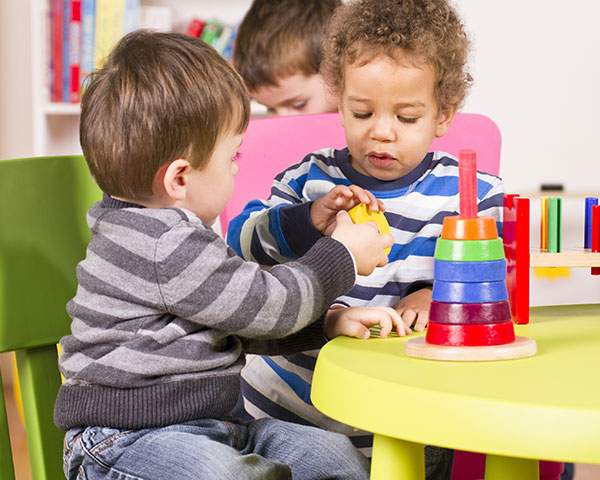Welcome to our Child Care – Daycare page
Child Care – Daycare
Children can experience high-quality child care in many types of child-care settings: at home, in a child-care centre or a family child-care home. High-quality child care begins by protecting a child’s health and safety, but goes much further to provide an experience that actively supports the child’s development.

Articles

Passing the ECE Torch: How I opened a future for my teenage son working with children
By Robin McMillan, CCCF Innovator Projects, Programs & Partnerships It was over a year ago that a neighbour pulled me aside and said “Your son is great with my kids.” I agreed and said what I usually say, “yes Ewan loves kids.” This time however, I took a minute and really listened to what she

Practitioners and Families Together: Encouraging Positive Behaviour
Families and early childhood practitioners have complementary areas of expertise that make them ideal partners in helping children develop social competence.

Supporting Breastfeeding in Child Care
Quality child care includes supporting the success and continuation of breastfeeding. A flexible child care provider is a valuable partner in supporting the mother’s decision to continue to breastfeed.

Coping with Separation Anxiety
Entering into a new child care arrangement can be an emotional experience for both parent and child. Here’s how to help your child cope with separation anxiety.

Making a Quality Child Care Choice
Finding and keeping quality child care can be challenging. Where do you start?

Respecting the Children in Our Care
There are many ways to treat children with respect in a childcare environment.
Research tells us that the following characteristics are fundamental to high-quality care:
- A high adult-child ratio. The fewer children under one adult’s care, the better. A high adult-child ratio is associated with closer attachment between the child and the caregiver, and to children who are more considerate and less aggressive towards other children. A high adult-child ratio – ideally, 1:3 for children under two years, 1:6 for children aged two to three and 1:8 for preschoolers – is also linked with children being more independent when they reach grade one, with better cognitive development, communication and social skills. Children who attend child-care centres with higher adult-child ratios also see themselves as more competent.
- Small group sizes. Small group sizes are associated with children who are more cooperative, less hostile and better behaved than children in larger groups. The children in small groups also talk and play more with other children and score higher on tests of social ability and readiness to read.
- Post-secondary training/education. Child-care providers with college diplomas or university degrees in early-childhood education are more responsive to the needs of the children in their care. Their training helps them to provide the children in their care with activities that are both stimulating and appropriate to their levels of development; as a result, the children under their care score higher than others of the same age on standard tests of language development.
- A positive care provider–child relationship. When child-care providers spend a lot of time with the children, are sensitive and responsive and actively interested in them and encourage them to talk, the children
- are more engaged with the world around them,
- spend less time in aimless wandering and
- have higher levels of language development and play.
- Well-defined spaces. Children thrive in settings where there are clear boundaries between group space and activity areas, whether indoors or outside. Well-defined spaces are associated with positive interactions among children and between adults and children, and are associated with more time spent exploring the environment.
- Well-structured, well-planned curricula. Children like routine and respond well to a familiar daily schedule. Children who attend child care that provides organized and age-appropriate activities – while offering children the chance to pick and choose what they want to do – score higher on cognitive and language tests and show greater levels of creativity.
- Significant parental involvement. A good relationship between a child-care provider and a parent – where each respects the other, there is good two-way communication and the parent is involved as a partner in the child’s care – helps the child-care provider to interact more with the child and the child to interact better with other children.
Child Care: A Canadian Snapshot The numbers on early childhood care and education in Canada
The CCCF, amongst others, has long been calling for national leadership and policy for children and families, fueled by the realities of modern Canadian families and the statistics outlined below. They paint a compelling and indisputable need for access to and the right to have affordable, quality and accessible child care options. Quality child care is needed across Canada and is more than a provincial/territorial issue. Here are the numbers.
Returning to Work with an Infant
A mother’s return to work after the birth of a baby can be difficult. It takes time to adjust to being a new mother and to becoming comfortable with your baby. Too often, just as this is happening, it is time to go back to work. Parents find themselves having to balance their personal needs with their baby’s needs, and their need to nurture and be with their baby with the need to work. Some people reevaluate their decision to return to work at this time; others assess their options. There are several steps that you can take ahead of time to help you prepare for your return to work. Some of the suggestions that follow may help you to decide whether and when to return to work; others may help to make the return smoother for you and your child.
Here are some resources to assist in making child care plans for your child.
Finding Quality Child Care: A guide for parents in Canada
This website provides information for parents in Canada looking for quality child care that’s affordable and meets the needs of their families. Find out why it’s hard to find good child care, about child care options in each province and territory, general information about child care in Canada, what the best evidence says about quality, and how to improve your chances of accessing high-quality child care.
Enjoy Some Of Our Past Content On This Topic
- Making a Quality Child Care Choice Finding and keeping quality child care can be challenging.
Where do you start? Click below for resources to help you select child care for your child. Download the copy here - Building a Partnership with Your Child Care Practitioner
Here are some suggestions for building a successful partnership with your child care practitioner. Download the copy here







